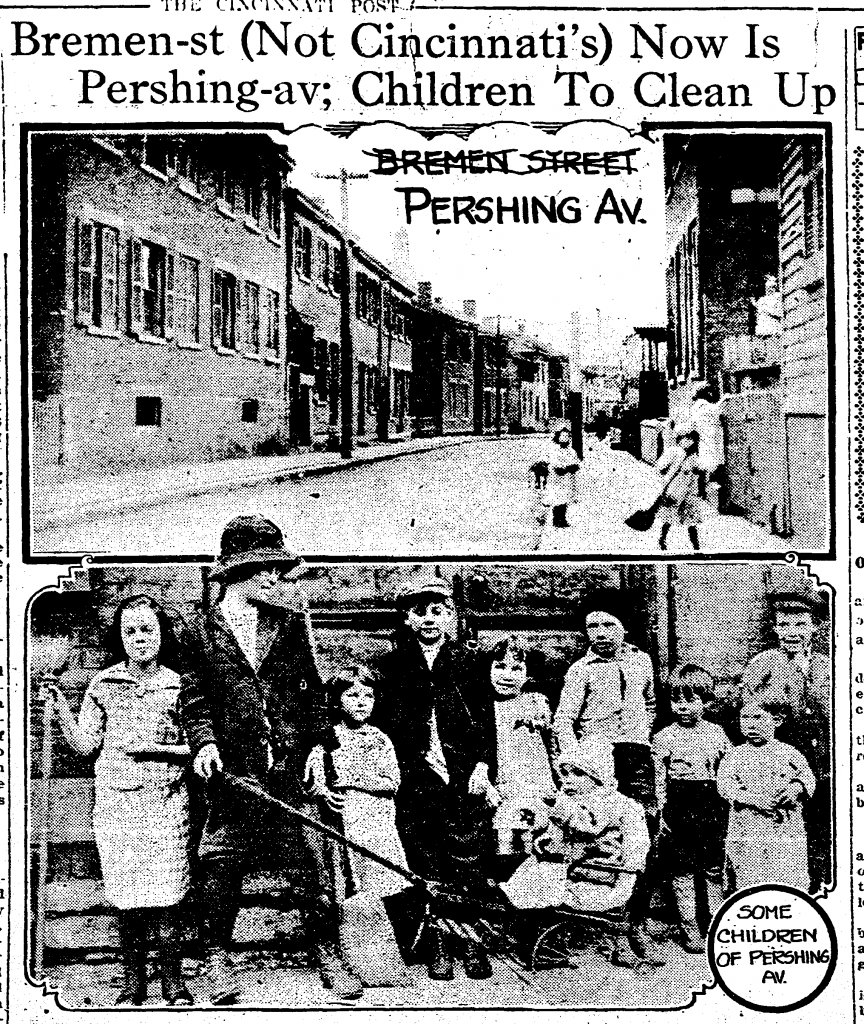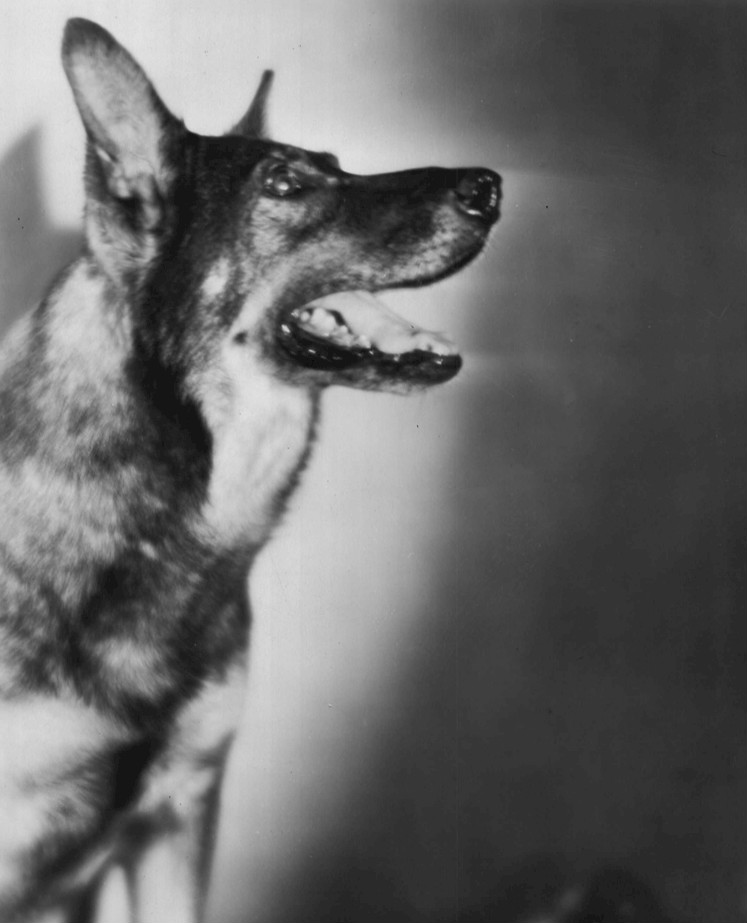By Paul A. Tenkotte
Special to NKyTribune
Church bells rang joyously on Christmas Day in 1918 in Cincinnati and Northern Kentucky. Peace reigned supreme. The Great War, later called World War I, had concluded the prior month. On the 11th hour of the 11th day of the 11th month in 1918, Germany signed an armistice with the Allies. Final peace arrangements would await negotiations at Versailles Palace in 1919.
Christmas of the prior year, 1917, was the first wartime yuletide for Americans in many years. The massive buildup of U.S. troops in Europe occurred during that autumn. Already by Christmas, however, the American doughboys were dipping into “their own meager pay” to bring Christmas to “every little French child near the American lines” (Cincinnati Post, January 14, 1918, p. 5).

A Pogue’s September Christmas ad featured Nénette and Rintintin charms, available in yarn and beaded versions. Cincinnati Post, September 30, 1918, p. 2.
In preparation for what they thought was going to be yet another wartime Christmas in 1918, the Council of National Defense asked retailers nationwide to begin their Christmas advertising campaigns early. Although their October 1st recommended starting date might not seem early today, it certainly was in 1918! In addition, the Council of National Defense also asked merchants “to hire no extra salespersons for Christmas trade, not to increase the hours of the sales force, and to restrict deliveries in order to save labor and fuel” (Cincinnati Post, September 26, 1918, p. 10). The Retail Merchants’ Association of the Cincinnati Chamber of Commerce gladly acceded to their recommendations.
The logistics of mailing Christmas packages to thousands of American doughboys overseas would also strain resources on both sides of the Atlantic. In France, for example, the postmaster at Tours calculated “that if every man in the expeditionary forces is allowed to receive one five-pound package for Christmas, it would require 700 freight cars a day for 10 days to transport the gifts from the base ports” to the soldiers (Cincinnati Post, September 24, 1918, p. 2).
Actually, American soldiers in France were limited to only one Christmas package each, weighing no more than three pounds, not the five pounds the Frenchman thought. Package size was standardized too, measuring only nine by four inches. The American Red Cross stocked the standard size parcels. If postmarked by November 15th, presents were promised to reach the soldiers by Christmas.

The year 1918 witnessed many events reflecting anti-German hysteria incited by U.S. involvement in World War I. The City of Covington, for instance, changed the name of Bremen Street to Pershing Avenue. Cincinnati Post, March 4, 1918, p, 4
On September 30, 1918, Pogue’s department store in downtown Cincinnati ran an ad in the Cincinnati Post, underscoring the need for customers to be patriotic and to finish their Christmas shopping early. The store also encouraged them to continue to buy Liberty Bonds.
Pogue’s featured an interesting item for sale, “Ninettes and Rintintins.” Actually, the proper spelling of the product was “Nénette and Rintintin” charm dolls. Made of yarn, the two tiny dolls—a girl (Nénette) and a boy (Rintintin) —were attached by a slender cord that could be worn around the neck for good luck. There were two important rules governing the effectiveness of the charm, however. First, one was not supposed to buy the charm dolls for themselves, but rather for another person. The giving of the dolls conveyed the good luck charm. Second, you were not supposed to separate the dolls.
How exactly the “Nénette and Rintintin” charm dolls came into being is unknown. Of course, the mythology behind them is rich. My favorite story is that told of a French regiment that discovered a little orphaned girl and boy during the course of the Great War. They adopted them, and the little girl began to make yarn dolls, which she then gave to the soldiers for good luck.
If the Rintintin name sounds familiar to you, there is yet another World War I story attached to it. In September 1918, A U.S. Army Air Service corporal, Lee Duncan, rescued a German shepherd and her puppies. He gave some of them away, and kept two for himself, naming them Nénette and Rin Tin Tin. Duncan brought them home to the United States with him. He trained Rin Tin Tin, who subsequently became an American movie idol, starring in 27 films.
We want to learn more about the history of your business, church, school, or organization in our region (Cincinnati and Northern Kentucky). If you would like to share your rich history with others, please contact the editor of “Our Rich History,” Paul A. Tenkotte, at tenkottep@nku.edu. Paul A. Tenkotte, PhD is Professor of History at NKU and the author of many books and articles.

Nénette and Rintintin charm dolls were popularized in France at the end of World War I, and became an immediate American sensation. Courtesy of Wikimedia Commons.

Movie idol, Rin Tin Tin, from the film Frozen River (1929). Courtesy of Wikimedia Commons.
























